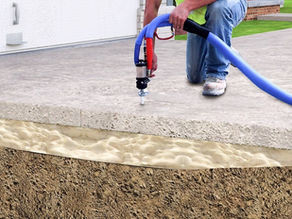top of page



Retaining Walls & Diverting Water Away from Your Home
Discover the importance of diverting water from your home's foundation with retaining walls, ensuring stability and protection. #WaterManage
Jul 18, 20233 min read


Revolutionizing Concrete Construction: The Invention of Polyfoam for Foam Lifting
Discover how the invention of polyfoam revolutionized foam lifting in concrete construction, offering efficiency and cost savings.
Jul 5, 20232 min read


Mudjacking vs. POLYcrete: Choosing For Your Concrete Repair
Confused about mudjacking and POLYcrete? Learn why POLYcrete's lightweight and permanent repairs are superior for concrete leveling.
Jun 23, 20232 min read
bottom of page
